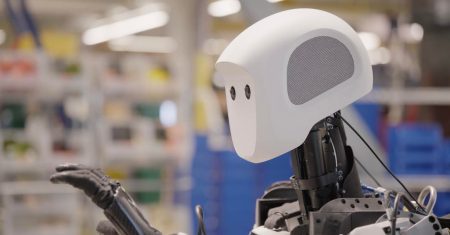As the Director of the Computer Science and Artificial Intelligence Laboratory (CSAIL) at MIT, I frequently find myself discussing the profound impact of artificial intelligence. What will rapid advances in this technology mean for our lives? Our jobs? Our future?
AI is central to many of our CSAIL projects, and I am optimistic about what the future holds! I believe AI will improve our lives in many ways, some of which we have only begun to imagine.
However, the foundation of this optimism is grounded in the belief that we—as educators, business leaders, national decision makers, and policymakers, have the ability to proactively address and manage the challenges that this technology creates.
To engage the community in the AI conversation, on June 27 2023, CSAIL co-hosted a symposium in collaboration with John Werner’s Imagination in Action on AI frontiers and Implications. We discussed recent AI results and highlighted what advances in AI are needed. We talked about how AI can make the world better, the perils we must account for, and some specific opportunity areas for where our actions will determine whether or not this story has a happy ending. We can only achieve the best AI outcomes if we address some big challenges that stand in our way. We have both technological and societal challenges.
First among the technical challenges is data and computation. Today’s AI methods require data availability, meaning massive data sets that have to be manually labeled and are not easily obtained in every field. If the data is biased or bad, the performance of the machine learning model will be equally bad. Additionally, the opacity of current machine learning systems presents another challenge, as users are unable to comprehend how decisions are made by these systems. The predominant reliance on pattern matching also poses robustness challenges.
A video synopsis of Liquid Networks
In response to these limitations, we have developed Liquid Networks, a new approach to machine learning. By introducing an innovative mathematical formulation for the function of artificial neurons and reimagining the architecture of machine learning models, Liquid Networks aim to overcome several technical hurdles with machine learning. These networks offer the potential to reduce the reliance on massive labeled datasets, mitigating the associated challenges. Moreover, they provide a pathway towards greater interpretability, allowing users to gain insights into the decision-making process.
Liquid networks enable superior performance by two key insights. First, they leverage a meticulously designed state space model to ensure the stability of neurons during the learning process. Second, they achieve richer representation through non-linearities on the synaptic inputs, boosting the expressivity of the model and its state during both training and inference.
The outcome of the Liquid Network approach is a continuous-time model, where the behavior of neurons is governed by dynamically adjustable differential equations. This dynamic tuning of time-constants, based on incoming inputs during inference, empowers Liquid Networks to adapt in real-time even after training. Consequently, these models exhibit remarkable compactness, vastly outperforming traditional deep learning models.
To put it into perspective, consider a deep learning model responsible for autonomous vehicle steering. Such a complex task typically requires over 100,000 artificial neurons. However, Liquid Networks demand only 19 neurons to accomplish the same objective. Moreover, the differential equations employed in Liquid Networks possess closed-form solutions, eliminating the need for expensive computational solutions.
Liquid Networks offer more than just improved computational performance; they possess a truly fascinating characteristic that sets them apart. These networks operate as causal systems, prioritizing the task at hand rather than being influenced by the context surrounding the task. This means that a Liquid Network can identify if its output is being altered by a specific intervention and establish a cause-and-effect relationship.
To demonstrate the practical implications of this causality, we conducted an experiment training drones to locate objects in forested areas. We captured video examples of this task during the summer, where the context was characterized by lush green leaves. We trained various models, including long short-term memory networks (LSTMs), continuous time recurrent neural networks (CT-RNNs), and Liquid Networks, using these videos without any annotations. While all models successfully learned the task within the summer context, only the Liquid Networks exhibited consistent performance during the fall and winter, even when the woods looked drastically different. Remarkably, the liquid networks even adapted to urban dynamic environments, showcasing their remarkable ability to generalize under significant distribution shifts.
Liquid neural networks have emerged as a promising solution for addressing challenges related to generalization in machine learning. Their causal nature enables them to excel in various real-world scenarios, where context and environmental factors change over time. With liquid networks, we have the potential to unlock new frontiers in artificial intelligence, empowering systems to adapt, reason, and make intelligent decisions in the face of evolving contexts and interventions.
To overcome the substantial technical hurdles in the field of AI, we urgently need new ideas and substantial and robust advancements. One notable stride towards this objective is the advent of Liquid Networks. Liquid Networks offer an elegant and efficient computational framework for training and inference in machine learning. With their compactness, adaptability, and streamlined computation, these networks have the potential to reshape the landscape of artificial intelligence and drive further breakthroughs in the field.
Read the full article here










